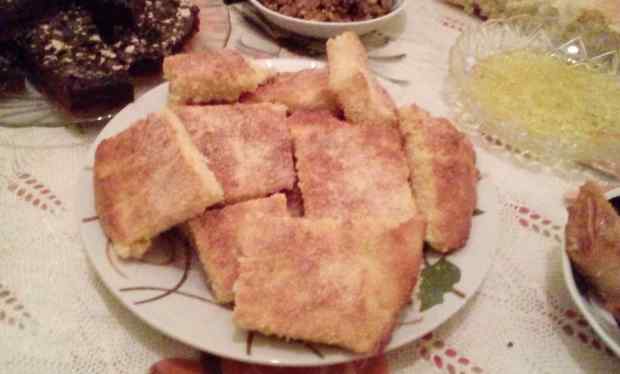 The proper Spanish lunch is no small or fast affair. It can’t be eaten with one hand, nor at your desk, and it isn’t accompanied by a cappuccino. The Proper Spanish Lunch is composed of two main courses, as much bread as you need, a glass of wine, and dessert. If you also need coffee, you can swap your dessert for one or pay the extra, but don’t assume it’ll come with chocolate sprinkles.
The proper Spanish lunch is no small or fast affair. It can’t be eaten with one hand, nor at your desk, and it isn’t accompanied by a cappuccino. The Proper Spanish Lunch is composed of two main courses, as much bread as you need, a glass of wine, and dessert. If you also need coffee, you can swap your dessert for one or pay the extra, but don’t assume it’ll come with chocolate sprinkles.
The Proper Spanish Lunch is a meal that symbolises an in-between space in my research, and, naturally, in my life. It is eaten with people who have helped me get from one place to another, and with whom I’ve enjoyed the time (moments and years) in between.
You don’t get anywhere without in-between spaces. If you go from a place you know to a place you absolutely don’t understand, you’re lost. But if you have a stepping stone, you can follow the familiar paths into the unknown space. That’s my route for weaving my way from understanding English and Spanish into French. It’s also the route I’ve used to reach Morocco: using what I understand about Spain to help me cross the Euro-African cultural divide. When you start from Spain, that distance is only 8 miles.
Lunch in Spain is quite literally called ‘la comida’ The Food. This is a very accurate description, because if you play the eating times game well, ‘la comida’ will be The Food of your day. Lunch is at about 2pm. For your first course (equal to the second in size) you have something like an enormous salad/lentils/soup, therefore meeting the RDA* for vitamins (hopefully). For your second course you have something of higher protein and prestige accompanied by even more vegetables, and even more bread. An example of this is the magnificent fish my friend effortlessly whipped up for us even just for a hungover Sunday lunch. Follow with dessert: either choose one of many different variations on the theme of ‘custard’, or alternatively a piece of fruit. Finally, coffee, to help you move again after The Food.
After Proper Spanish Lunch you are absolutely free until about 10pm because if you followed the instructions above, you won’t be hungry until then. Hence, if it’s a working day, far from being lazy, you can work until 6, 7 or 8pm, and then go out for a drink afterwards and then get home for 10pm to have dinner. Amazing. This only happens in the UK one day of the year, Christmas Day, when we indulge so much in the accompanying drinks we are good for nothing by the time it gets dark.
So what’s the relation with Morocco? Well this is where Northern Europe meets Northern Africa. Remove the alcohol and Proper Spanish Lunch looks less like Christmas Day in the UK and more like the salad or beans followed by Tagine in Morocco. More importantly, as in Morocco, time is made for eating in Spain. Someone has also made even more time: this is properly cooked food. I have yet to have a Proper Spanish Lunch with boil-in-the-bag rice, a pot noodle or boxed sandwiches.
Finally, the ‘in-between’ role of Spain, not only in my life, but also in my research, came into real relief this past week. It is extremely difficult for a Moroccan to get a UK visa, however, for some, it is not so difficult to get to Spain. Spain is part of the Schengen Area and so the close ties (linguistic, business, educational, family) mean that many Moroccans can get long term visas of several years to travel to countries like France and Spain with whom there have been very long term ties, and therefore the wider Schengen Area.
So although I had said goodbye to Morocco for the time-being following fieldwork, I was able to meet my Moroccan colleagues at a seminar last week in the very fitting, and in-between, Spanish context. So I’ve done a bad job of coming home from Morocco and staying put (the first week of term might have been easier without such opportunities to keep the doors open to research and maybe my sister should have confiscated my passport after all). Yet I can also see that Proper Spanish Lunches, and particularly this time with my Moroccan colleagues, are going to be absolutely key to keeping my research alive, and to keeping me going, perhaps until 10pm.


*Recommended Daily Allowance




